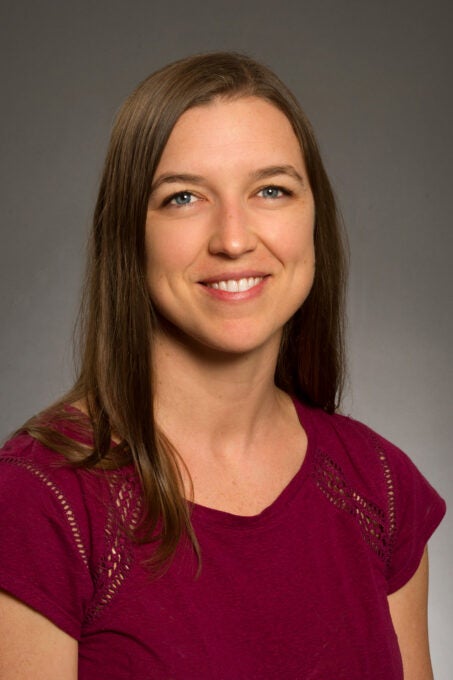
Clinical Associate Professor, Department of Biological Sciences
Year Arrived at BSU: 2016
Mailing Address:
Department of Biology
Boise State University
Boise, ID 83725-1515
Office Location: Science Building, Room 127
Email Address: sarahdalrymple@boisestate.edu
Academic Degrees
- S. Ecology & Evolutionary Biology, University of Tennessee, 2005
- D. Population Biology, University of California, Davis, 2012
- Postdoctoral Fellow, University of Tennessee, 2012-2015
About
Sarah got her first research experience as an undergraduate at the University of Tennessee, where she investigated the effect of temperature on the developmental rate of the social spider, Anelosimus studiosis. She received a Ph.D. in Population Biology at UC Davis, where her dissertation research explored the relationship between ants, Jeffrey pine trees, and fire in the Sierra Nevada mountains of California. During this time, she also discovered a passion for teaching and decided to shift the focus of her career on this. In this pursuit, she completed a teaching postdoctoral fellowship at the University of Tennessee, where she taught biology classes, engaged in curriculum reform, and designed teaching training modules for graduate TAs teaching intro biology labs.
At BSU, Sarah teaches a range of undergraduate courses on topics related to ecology and evolution, as well as a graduate teaching class. She also works in the Center for Teaching & Learning, where she focuses on equity, inclusion, and student success. In her free time, she loves to garden, run, rock climb, and hang out with her two kids.
Teaching
- BIOL 304 – Introduction to Ecology & Evolution
- BIOL 306 – Communication in the Biological Sciences: Analysis of scientific literature in professional written and oral forms
- BIOL 433/533 – Behavioral Ecology: Exploration of the fitness consequences of animal behaviors and the major theories of the field, with an emphasis on interpreting models and experimental design
- BIOL 485 – Undergraduate Research in the Biological Sciences: Synthesis of research methods and creation of research posters for undergraduate researchers
- BIOL 604 – Introduction to College Teaching: Overview of effective teaching practices for graduate students (required for graduate students who are TAs)
Publications
Dalrymple, S., D. Bose, and S. Shadle. In press. Designing for student success: Using the faculty learning community model to prepare faculty for deeper engagement in student success. Faculty Learning Communities: Communities of Practice that Support, Inspire, Engage and Transform Higher Education Classrooms.
Bose, D., S. Dalrymple, and S. Shadle. 2020. A renewed case for student success: using transparency in assignment design when teaching remotely. Faculty Focus Blog.
Dalrymple, S. E., and H. D. Safford. 2019. Ants, wind, and low litter deposition contribute to the maintenance of protective clearings around Jeffrey pine (Pinus jeffreyi). Forest Ecology and Management (438):44-50.
Dalrymple, S. E., A. J. Auerbach, and E. E. Schussler. 2017. Taking a community approach to curriculum change. International Journal for the Scholarship of Teaching and Learning (11:2):Article 5.
Dalrymple, S. E., and H. D. Safford. 2013. Natural forest floor clearings around trees in Jeffrey pine forests reduce tree damage and mortality following wildfire. Forest Ecology and Management (310):847-856.
Jones, T.C., S. E. Riechert, S. E. Dalrymple, and P. G. Parker. 2007. Fostering model explains environmental variation in levels of sociality in a spider system. Animal Behaviour (73):195-204.